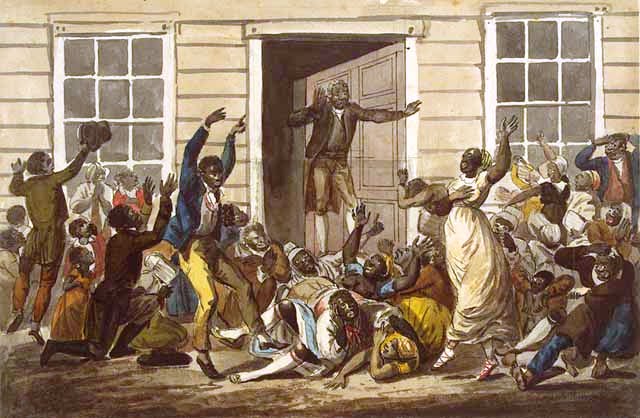 All y’all motherfuckers need to listen up, because I am here to testify!
All y’all motherfuckers need to listen up, because I am here to testify!
Bubbles are the shit. If you don’t think you like sparkling wine, you need to sleep around some until someone does you the way you want, because bubbles are the answer! Bubbles will eat your lunch, tell you how good it was, and you will never be hungry again. Bubbles will make the roads safe for cyclists. The revolution will not be televised, but it will have bubbles in it. Bubbles will make your life look like it does in the magazines. Bubbles will make you weightless and bullet-proof. Bubbles will make your teeth tango like there’s Dancing With the Stars in your mouth and everyone’s invited. Whatever’s wrong with your life, there’s a bubble to fix that. Whatever’s right, there’s a bubble to celebrate it. Drink your bubbles! Drink them, I say!
If your paltry excuse as to why you don’t drink Champagne and other sparkling wines is that you don’t know anything about them, here’s another installment of IDK (I Don’t Know) Wine to the rescue. Cowboy up, people, because it’s December and the bubbles are coming for YOU!
Champagne is sparkling wine that only comes from the Champagne region of France. There are lots of other places they make sparkling wine, and in our attempt to be precise here at Wine Scamp Industries, I will refer to sparkling wine that does NOT come from Champagne as any number of things, but I will not call it champagne. That’s imprecise and just, well, mean.
 Important things to remember about sparklers: (1) They match with any food, even eggs. Any difficult pairing of wine and food can be solved with bubbly. Heavier foods will want pink sparkling, and lighter foods will want white. (2) It’s impossible to be unhappy when drinking sparkling wine. Life is too full of hardship as it is, so drink bubbles frequently, not only on special occasions. (3) Not all bubbly is expensive. There is perfectly drinkable sparking wine out there for less than $20 per bottle. Look for “methode traditionelle” (traditional method) or “methode champenoise” on the label for an indicator of higher quality.
Important things to remember about sparklers: (1) They match with any food, even eggs. Any difficult pairing of wine and food can be solved with bubbly. Heavier foods will want pink sparkling, and lighter foods will want white. (2) It’s impossible to be unhappy when drinking sparkling wine. Life is too full of hardship as it is, so drink bubbles frequently, not only on special occasions. (3) Not all bubbly is expensive. There is perfectly drinkable sparking wine out there for less than $20 per bottle. Look for “methode traditionelle” (traditional method) or “methode champenoise” on the label for an indicator of higher quality.
Warning: what follows is a semi-exhaustive discussion of sparkling wine, which may tell you more than you ever felt that you needed to know about the subject. You will come out the other end with enough knowledge to purchase a decent bottle of bubbly in the store or at a restaurant. Proceed with care.
Sparkling wine is just table wine with carbon dioxide trapped in it, that’s all. When the wine is released from the corked or capped bottle, the carbon dioxide escapes in gorgeous, intoxicating (not literally) bubbles. You can create sparkling wine by carbonating table wine or through the methode champenoise, the “Champagne Method.”
“Come quickly… I’m drinking stars!”Dom Perignon supposedly said this sometime toward the end of the 17th century, upon discovering that some of the bottles of his wines had lots of bubbles in them. He had little to no idea how he got those bubbles in the bottle (the first time was A Big Mistake), and no one was really able to reliably make sparkling wine every time until around 1829, when the methode champenoise was born.
 Methode Champenoiseis the real shit, people: the stankiest of the stanky green, the emperor among kings, the real live boy of the marionettes. Basically, it goes like this: grape juice is fermented, and made into normal wine. Wine is poured into bottles, and then a small amount of sugar and yeast is added to the bottle, which is quickly capped. The yeast cells act like little Pacmans (Pacmen?) and eat up all the sugar that was put in the wine (nom nom nom). As a byproduct of consuming the sugar, the yeast produces carbon dioxide. Since the bottle is under pressure, the CO2 doesn’t escape, but instead dissolves in the wine itself. The yeast cells eat up all of the sugar, and then starve to death, sinking to the bottom of the bottle like little dead sea monkeys (except much smaller, and not shrimpy in any way, and now we call them the lees). The wine will now sparkle.
Methode Champenoiseis the real shit, people: the stankiest of the stanky green, the emperor among kings, the real live boy of the marionettes. Basically, it goes like this: grape juice is fermented, and made into normal wine. Wine is poured into bottles, and then a small amount of sugar and yeast is added to the bottle, which is quickly capped. The yeast cells act like little Pacmans (Pacmen?) and eat up all the sugar that was put in the wine (nom nom nom). As a byproduct of consuming the sugar, the yeast produces carbon dioxide. Since the bottle is under pressure, the CO2 doesn’t escape, but instead dissolves in the wine itself. The yeast cells eat up all of the sugar, and then starve to death, sinking to the bottom of the bottle like little dead sea monkeys (except much smaller, and not shrimpy in any way, and now we call them the lees). The wine will now sparkle.
Ew, dead yeast cells, yuck. Well, not to worry: they’ve got a clever way to get this stuff out of the wine (because it makes the wine cloudy, not because it hurts anything) without letting all the bottles out. Inspired, really.
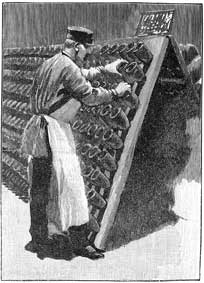 Riddle me this, Batman: So the key is to get all the lees into the neck of the bottle so they can be quickly removed. This is accomplished by the riddler. This guy is responsible for turning each of the bottles of bubbly one quarter turn every day for about 2 weeks until the bottles are all pointed down and all the lees are in the neck. A skilled riddler can turn 20,000 to 50,000 bottles per day. They do have machines for that now, but some sparkling wine houses still do it by hand, many of them in Champagne. The renowned Widow Clicquot is credited with inventing this technique, by the way.
Riddle me this, Batman: So the key is to get all the lees into the neck of the bottle so they can be quickly removed. This is accomplished by the riddler. This guy is responsible for turning each of the bottles of bubbly one quarter turn every day for about 2 weeks until the bottles are all pointed down and all the lees are in the neck. A skilled riddler can turn 20,000 to 50,000 bottles per day. They do have machines for that now, but some sparkling wine houses still do it by hand, many of them in Champagne. The renowned Widow Clicquot is credited with inventing this technique, by the way.
Now it’s magic time: the bottles are all dipped, neck down, into liquid nitrogen or something else super-cold, and the necks are frozen. This traps the lees in a ice pellet of wine. Then they turn the bottles right side up and the bottle cap is removed. POW! The pressure in the bottle shoots the frozen pellet of wine out of the bottle, possibly across the room. 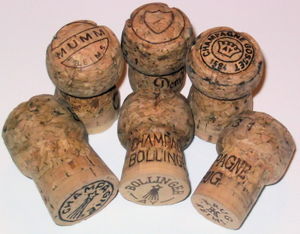 The now clear wine is topped off with a dosage, which is a mix of wine and some sugar, depending on the style of bubbly being made, and the traditional fat cork is wired onto the bottle. Presto! Sparkles, anyone?
The now clear wine is topped off with a dosage, which is a mix of wine and some sugar, depending on the style of bubbly being made, and the traditional fat cork is wired onto the bottle. Presto! Sparkles, anyone?
Now, if it doesn’t saymethode champenoise on the bottle, it didn’t go through all this hullaballoo. There are other ways to get the bubbles in the wine, including what’s called the charmat method, in which that second fermentation happens in a huge 500- to 1,500 gallon tank, and lots of wine is sparkled at once. Then it’s pumped off the lees and bottled. This is the cheaper bubbly that one might prefer to mix with juice or liquor, although sometimes it’s quite drinkable.
Where in the world? The most expensive sparkling wine you will find will come from Champagne, and be vintage. The step down from there is non-vintage sparkling, in which still wines from many different years will be blended to create a certain flavor profile, and then Ye Olde Methode Champenoise will ensue.
California has been making sparkling wine since the 60s, and there are many French houses with wineries in CA as well, like Domaine Chandon (Moet Chandon), Mumm Cuvee Napa (dur, Mumm), Scharrfenberger (Clicquot) and Roederer Estate (the Cristal people). Native California companies that are not owned by French houses include Schramsberg, J Wine Company and Iron Horse.
If it’s sparkly, French and not from the region of Champagne, it’s called Cremant. Other places to find great bubbly include Australia, where they even make sparkling Shiraz, and Italy, with their Prosecco (usually made by the charmat method), Spumante, and Franciacorta. Bellavista Franciacorta, a sparkling wine made in Italy via methode champenoise, is one of my favorites. Then there’s Spain, of course: you can find some great deals in cava, the Spanish term for their sparkling wine. Germany makes Sekt and South Africa makes Cap Classique.
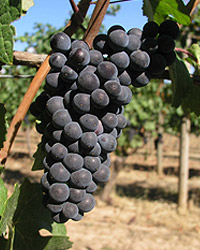 Grape Ape: In Champagne, all bubbly is made from only three grapes (Chardonnay, Pinot Noir & Pinot Meunier), but in other regions, there are lots of grapes used to make sparkly wine. Cava is made from a blend of Macabeo, Parellada, Xarel·lo, Chardonnay, and Subirat. Sekt is usually made from Riesling, Pinot Blanc and Pinot Gris grapes.
Grape Ape: In Champagne, all bubbly is made from only three grapes (Chardonnay, Pinot Noir & Pinot Meunier), but in other regions, there are lots of grapes used to make sparkly wine. Cava is made from a blend of Macabeo, Parellada, Xarel·lo, Chardonnay, and Subirat. Sekt is usually made from Riesling, Pinot Blanc and Pinot Gris grapes.
A sparkling wine that calls itself Blanc de Blancs is 100% Chardonnay. 100% Pinot Noir is used to make Blanc de Noirs. A Rose is usually a blend of red and white wines, which is then bottled for its second fermentation.
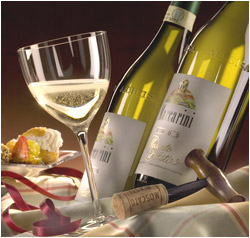 Size matters. Smaller bubbles are better, and winespeak terms for talking about how small the bubbles in your wine include: perlage(as in, check out the minute perlage) and bead (as in, note the fine bead). The foam on top of the wine when it’s poured is called mousse, and we like those bubbles to be small, too. You’re going to want to drink your sparkler from a flute glass rather than those wide, flattish cups, because flutes allow less surface area for the wine to release its CO2, and allow the bubbles to last longer. A white wine glass will allow you to taste even more on a sparkling wine, as there will be more room to swirl and sniff in the larger glass.
Size matters. Smaller bubbles are better, and winespeak terms for talking about how small the bubbles in your wine include: perlage(as in, check out the minute perlage) and bead (as in, note the fine bead). The foam on top of the wine when it’s poured is called mousse, and we like those bubbles to be small, too. You’re going to want to drink your sparkler from a flute glass rather than those wide, flattish cups, because flutes allow less surface area for the wine to release its CO2, and allow the bubbles to last longer. A white wine glass will allow you to taste even more on a sparkling wine, as there will be more room to swirl and sniff in the larger glass.
Sugar, Sugar… Sweetness levels in Champagne go like this:
- Brut Natural or Brut Zéro (less than 3 grams of sugar per liter)
- Extra Brut (less than 6 grams of sugar per liter)
- Brut (less than 15 grams of sugar per liter)
- Extra Sec or Extra Dry (12 to 20 grams of sugar per liter)
- Sec (17 to 35 grams of sugar per liter)
- Demi-Sec (33 to 50 grams of sugar per liter)
- Doux (more than 50 grams of sugar per liter)
In my experience, Brut is plenty dry enough. If you are truly terrified of having a “champagne headache,” go with Extra Brut. Feel free to try Brut Zero if you can find it, but Brut suits nearly everyone’s palate just fine. Sec and Demi-Sec will be appropriate for desserts or super-spicy foods.
A few last notes: Drink your champagne ice-cold. If you don’t finish it all that day, and wish to drink some tomorrow, try buying this clever little bubble-saver: Champagne Bottle Saver Stopper It’s my favorite wine accessory.
Finally, our inspirational message of the day:
“I only drink Champagne when I’m happy, and when I’m sad. Sometimes I drink it when I’m alone. When I have company, I consider it obligatory. I trifle with it if I am not hungry and drink it when I am. Otherwise I never touch it—unless I’m thirsty.” – Lily Bollinger
Cheers, y’all!
2 replies on “IDK Wine: Bubbly”
Fun post and true that. Amen, sister.
Great post, I’m laughing my ass off from that intro.
And you get *mad props* for pairing bubbly & sushi (my wife & I do that all the time – and every time without fail, someone asks us “what are you celebrating?”)…
cheers!